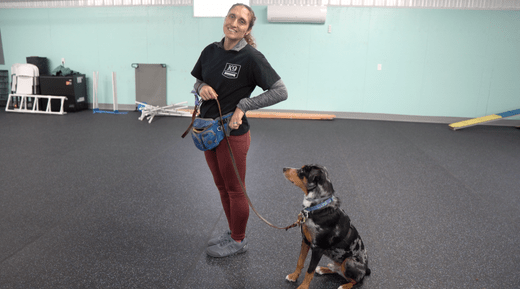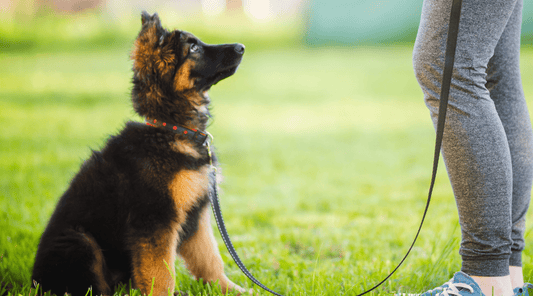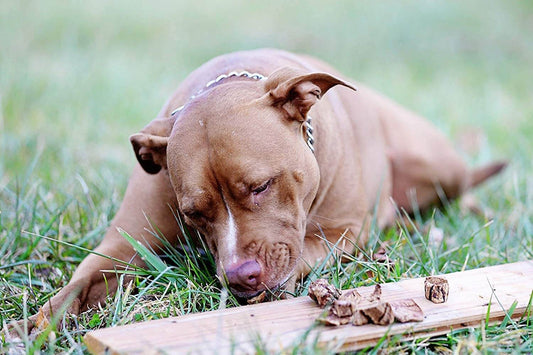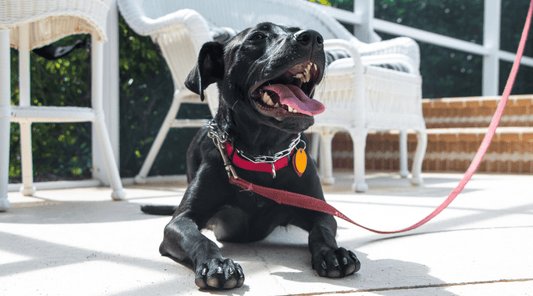
Off Leash Training Tips for Dogs: Freedom with Control
Dawn Miller Jan 14, 20255 Minute ReadWhen I think about the freedom off-leash adventures bring to me and my pack, it feels like I've met my ultimate goal as a dog mom. There’s nothing quite like seeing your pup darting through the woods or strolling beside me on a trail without a leash in sight.
But I'll be honest—getting to that point takes some significant off leash training for dogs—and some patience. And it's so worth it.
I've built trust with proper training, consistency, and, of course, some healthy dog treats for dog training along the way.
Just the other day, I was hiking with my terrier Pixie and lab mix Bruno at the nearby state park. While I casually took in nature's beauty, my dogs ran free through the woods, over hills, through trees, smelling everything—but they never wandered too far.
Unexpectedly, I ran into my neighbor Kate and her excitable cocker spaniel, Finn. With one hand clutching the leash and the other clinging to her smartphone precariously, she exclaimed, “How do you get your dogs to listen so well without a leash? I fear if I let Finn go here, he wouldn't come back."
I assured Kate that we didn't get to this point overnight. Like life itself, off-leash training is a journey. But it’s absolutely worth getting started right now.
Why Off Leash Training for Dogs Is Important
I get it. We have something called "leash laws" in most towns and communities. So why would off leash training be a priority?
I have my reasons.
Enhancing Safety
You never know when something might happen and your dogs gets off their leash. Or they jump out of the car at the vet or a rest stop. They could run right into traffic or get into a fight with another animal.
Better Exercise
Dog parks and dog-friendly parks are designed for off-leash play so dogs can get more exercise than they do during leashed walks.
And when that playtime is over, you shouldn't have to spend 15-20 minutes trying to get your dog back on the leash or into the car.
Free Roam Adventures
Then there are the hiking trails, camping, or a day at the lake. I want my dogs to be able to explore. But I also need to know they're not wandering too far.
Stronger Bond
It creates a stronger bond with the dog parents, as they will always come back when I call, no matter the excitement.
Mentally Stimulating
They get to explore and choose where to sniff up a good squirrel next. It expands their mind and sense of well-being.
Managing Hyper Dogs
For hyper dogs, off leashing lets them run off more energy so they're easier to train and manage at home.
Imagine a seamless transition from play to travel because they come when you call. Now, let's get into it!
The Basics of Off Leash Dog Training: Recall Command
If your dog doesn’t come when called 100% of the time, it’s not off-leash trained. And it's not ready to go off-leash outside of a very controlled environment. So, let's get them there with some dog training.
1. Start Indoors
Begin in a low-distraction environment like your living room. Call your dog’s name in an upbeat tone. Then say a recall word, such as “Come!”.
Don't say anything else when calling them. You want them to focus on and learn the command word.
2. Reward Immediately
As soon as your dog comes to you, offer high-value dog training treats and praise.
Single-ingredient options like beef lung bites work perfectly because they’re healthy and irresistibly tasty.
Consider getting a sturdy treat pouch that makes it easy to store and quickly retrieve treats. I use this one from Mighty Paws. It has everything I need for on-the-go training, from the hands-free strap to the bag dispenser to several easy-access treat pockets.
3. Practice in a Fenced Yard
Once your dog consistently responds indoors, move to a fenced outdoor space to increase distractions while maintaining safety.
No yard? Try the dog park when no one's there, or ask a friend if you can borrow theirs for 20 minutes or so for several days.
4. Increase the Distance
Gradually increase the distance between you and your dog. Use a long training leash if necessary. It allows you to make distance without risking them running away before they're fully trained.
This one on Amazon is great. You can get up to 50 feet. Dog training tools like this make recall command training so much easier.
5. Proof the Command
Practice in different locations and with increasing distractions. Dogs need to understand that “Come” means the same thing whether they’re in the park or at home. Reward them with dog treats and praise when they come to you in each setting.
Now, I hate to be a party pooper, but sometimes when Pixie is chasing a rabbit or squirrel, I will say, "Pixie. Come." This is what I mean by proof.
Anytime. Anywhere. No matter what the distraction is, she comes to me.
Transitioning to Off-Leash Walks
When you’re confident in your dog’s recall skills, you can start transitioning to off-leash walks. But don’t rush—this is where preparation meets patience.
Here are some of my top tips for a smooth transition.
- Choose the Right Location. I always start in a remote area where your dog won’t encounter heavy traffic, other dogs, or too much wildlife. A large green space during non-busy hours might be a good choice.
- Use Dog Training Tools. A long-line leash can act as a safety net during the transition phase, giving your dog a sense of freedom while keeping you in control. But don't try to use a 50-foot long leash in the woods for apparent reasons.
- Stay Engaged. Don’t let your dog wander too far. Regularly call them back to reinforce the recall command and reward them for their good behavior. Carry high-value dog treats and engage with your dog on the walk.
- Overcome separation anxiety. Some dogs may feel overwhelmed off-leash. So, they won't get the exercise and mental stimulation you want to give them. Build their confidence with short, positive sessions and lots of encouragement.
- Handle Inconsistent Recall Correctly. Avoid scolding them. Instead, go back to basics. Take them down to the previous level, which may mean returning to a fenced yard or long leash in the park.
The Importance of High Value Dog Treats in Dog Training
It's vital to find a training treat that's both irresistible and nutritious because you may need to give them many treats during these dog training sessions. These high value treats support better dog health and active dog lifestyle, so you can do more together out in those wide open spaces.
Single-ingredient treats like beef lung bites provide the motivation your dog needs to focus on you.
And give them a meaty beef marrow dog bone after a great training session to reinforce your bond with them. The grass-fed beef dog bones I choose have many benefits for health and wellness.
Learn How to Train a Dog Off Leash...And More!
And if you need extra guidance, check out this Free 7-Day Dog Training Series to master essential commands like recall. It’s the perfect way to start your off-leash journey and maybe win some well-behaved dog contests.
Available On:





